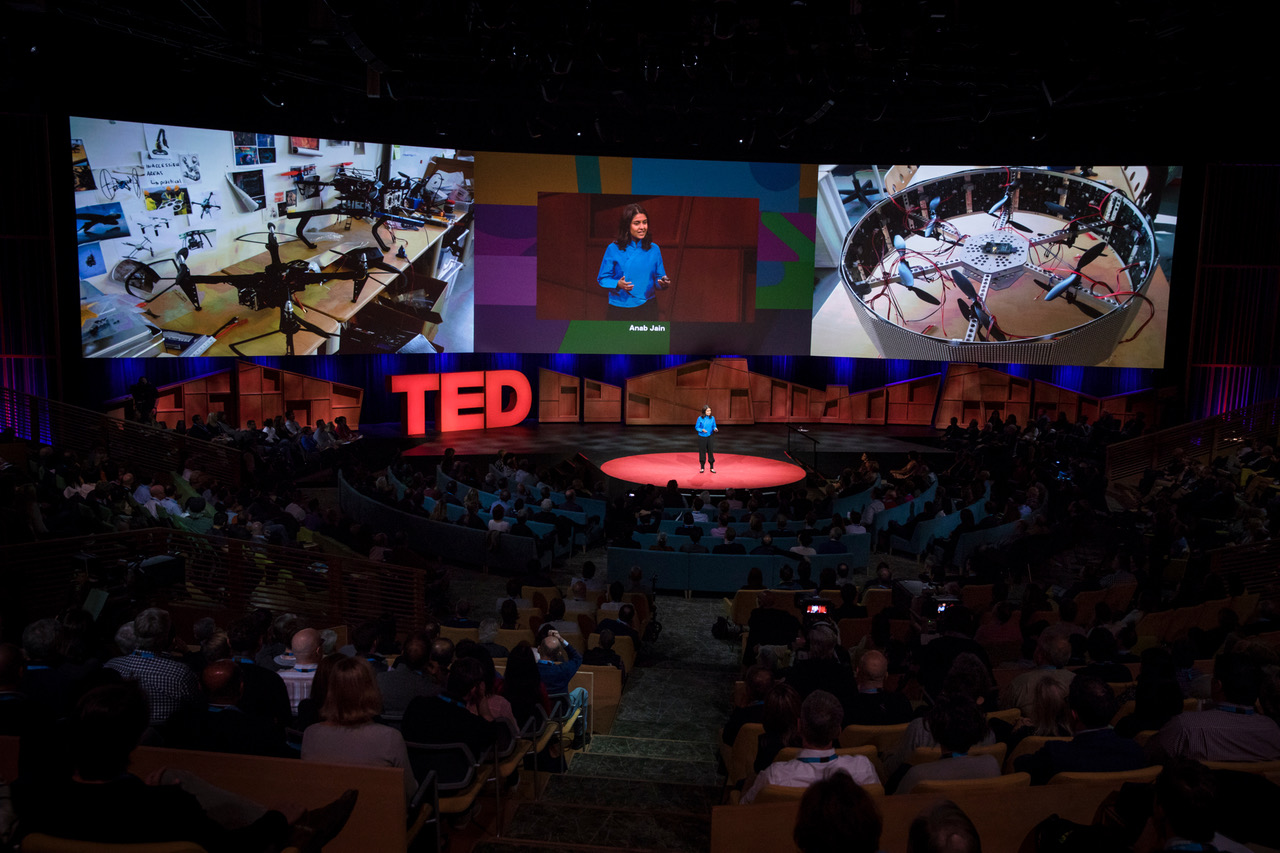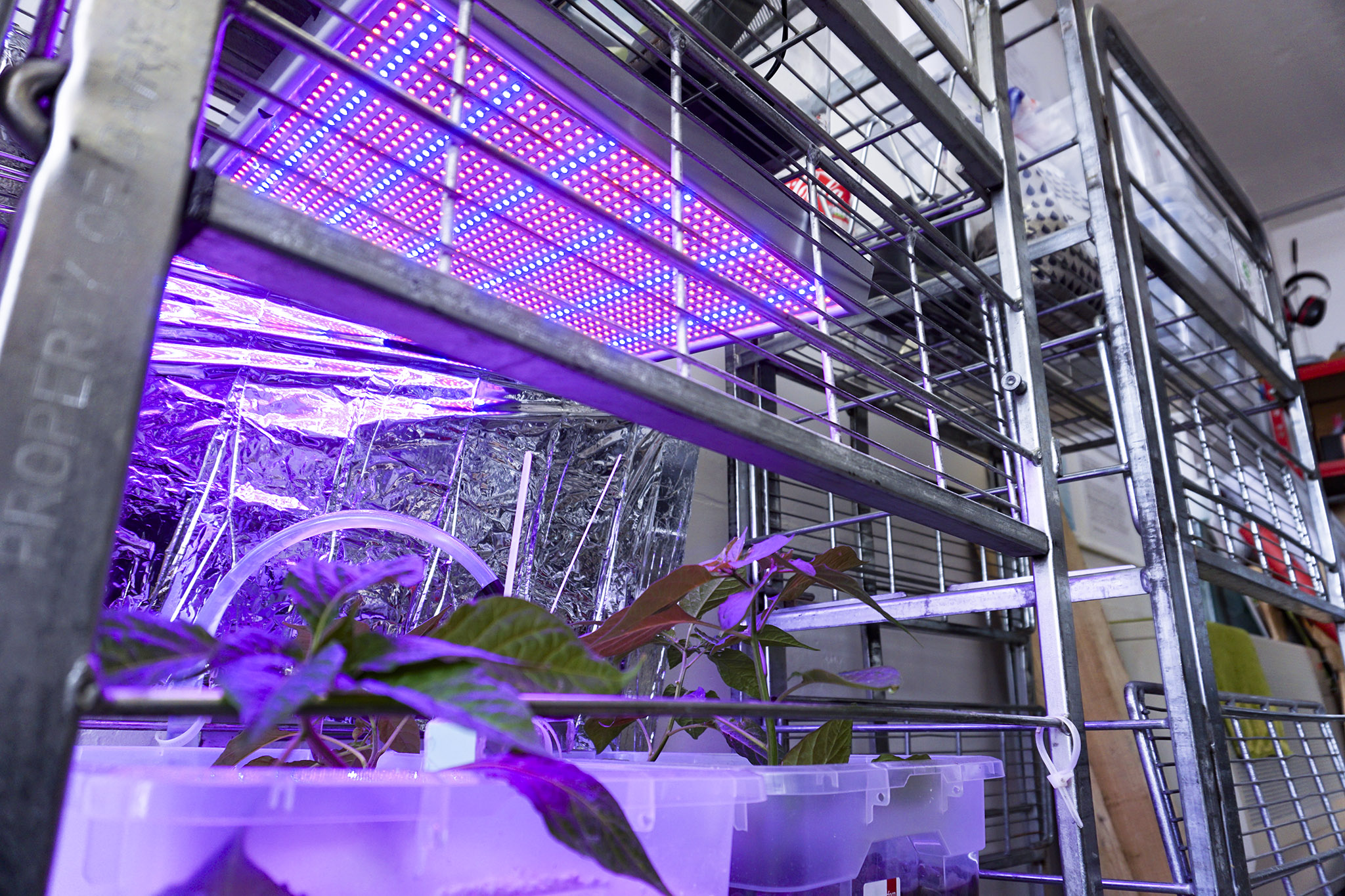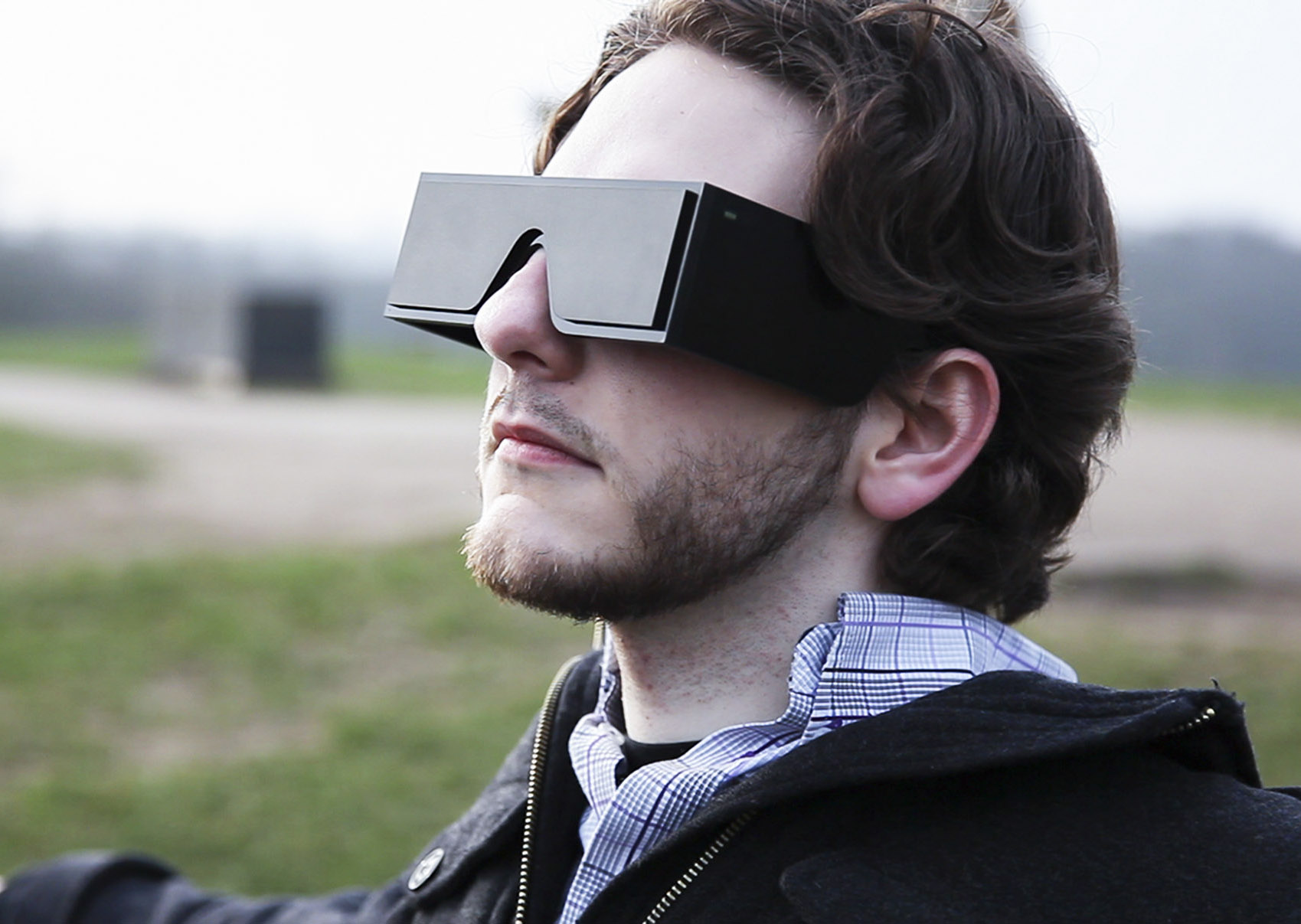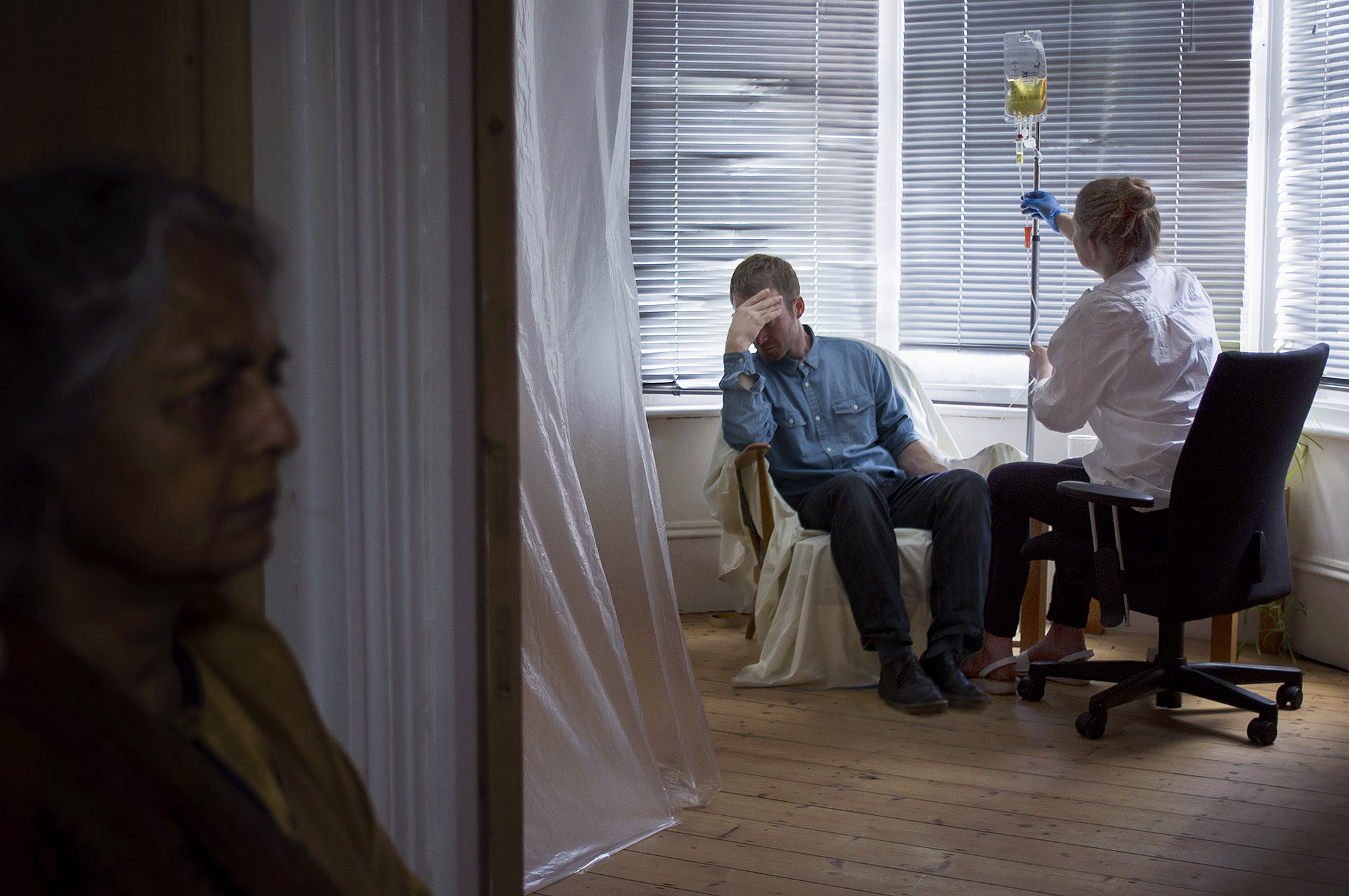We recently finished a project Dynamic Genetics vs. Mann exploring the implications of synthetic biology and genomics in the context of future healthcare. We are thrilled to have Christina Agapakis reflect on the project in the context of genomic prediction, privacy, and piracy.

This is me
What if personalized medicine never happens? What if the promised therapies tailored to our unique genomes just never materialize? Although it seems inevitable, there is no guarantee that we will be able to precisely match treatments to individuals. For complex diseases with many associated genes interacting in changing environments, the statistical power to make therapeutic predictions currently remains elusive. What if we sequence the genome of every single person on earth and the data is still not big enough?
In such a future, will we still believe in genomic promises? Perhaps, unable to let go of the hope that our genes can predict our future health, we continue to demand access to our largely uninformative genetic code. Unable to find strong associations for complex and chronic diseases but still desperate for determinism, we might look for answers not only in the genes of our own cells but the genes of our microbial symbionts.
This hope might remain part of medical rituals, a statistical placebo for the post-genomic checkup. The doctor takes samples of your secretions and sends them to a genome sequencing company, the costs barely a blip on otherwise ballooning medical bills. You talk about your fears of aging, cancer, neurodegenerative diseases, antibiotic resistant bacteria. You discuss your parents and grandparents’ medical history. Your blood pressure, cholesterol, and blood sugar are measured. Risks are calculated. You should probably lose some weight, eat more vegetables, walk more. You should smoke less, eat less processed food, less sugar. You should take better care of yourself. You probably should have done this anyway. You go home with a reassuring list of percentages that put a number on the fundamental uncertainty about your future.
The sequencing company analyzes your DNA, bills your insurance company, and stores your data in the cloud. Your demographic information and health records are linked to your unique set of sequence variations. Associations are identified, risk percentages are modified. Sequences are patented. Progress (money) is made.
You continue to be anxious about privacy. You think, “if a company is telling me that my DNA data is me, then why should that company have so much access to me?” We are told that in our dangerous world we must give up some privacy for increased safety. For increased health we must give up some of our expectations about genetic privacy.



“Crimes of a Genetic Nature”
DNA is good for telling stories about the future. DNA as machomolecule, in control of our genetic destiny. DNA as code, programmable, controllable, readable, re-writable. Like other data-driven futures, DNA-based stories are stories about probability, risk, and control: risk of developing certain medical conditions and the control that DNA has over our biological characteristics. Risk that genetic information will be used to discriminate against us, risk that our DNA will be used to control what we are and what we can be.
Superflux is good at telling stories about the future, stories that help us connect with the abstractions of probabilities and the weirdness of our unevenly distributed futures. With Dynamic Genetics vs. Mann, Superflux tells a story about DNA, risk, and control, not with percentages and promises but through the carefully crafted evidence of a fictional patent infringement trial.
The story is set in Britain in the near future, when the UK’s National Health Service (NHS) has been privatized and transformed into National Health Insurance (NHI). The trial’s defendant, Arnold Mann, faced with unmanageable NHI premiums due to undetermined genetic risk factors, turns to black market gene therapy, replacing his risky genes with healthy sequences patented by the fictional biotech giant Dynamic Genetics. With these new genes, his insurance costs are decreased, but he is prosecuted for the DNA sequences that he now holds in his cells, sequences that he didn’t pay the right people for.
At first glance, DG v Mann seems to be a very familiar kind of future, especially for people who don’t live in the UK and don’t have an NHS. For many Americans, a story about an insurance company trying to use anything and everything to screw you over is not an unfamiliar fiction but an everyday fact of life. The idea that an insurance company could one day use your DNA sequences to justify increasing your premiums or deny you coverage is such a pervasive story in the American debates about gene sequencing that it was codified into law, outlawed by the 2008 Genetic Information Nondiscrimination Act. If anything, DG vs. Mann might give its first shock of weirdness with the notion that it could be weird for such corporate shenanigans to exist in the first place. Imagine a future where Americans think that privatized insurance is a frightening and ridiculous scenario!
This is one way that design fiction could begin to help us “bypass the established narratives about the present and future,” challenge us to see the present world from a new perspective, and teach us to challenge our assumptions about what is and what might be possible–both technologically and politically. Design fictions show technologies at the edge of speculation and reality, inviting us to imagine, question, and debate the applications and implications of new science and technology in a cultural context. Exploring genetic technologies in relation to government programs, the business of health care, and the ongoing debates about piracy and intellectual property allows for discussion not just about the function of the technology itself, but its inextricable relationships with power, politics, economics, and society.
Fictions give life to these complex relationships and give us a vocabulary to debate the kind of future we want (think of how often Gattaca used to come up in conversations about DNA sequencing). But while such stories are good at challenging our assumptions about how a technology might be used, rarely do they challenge the deeper assumptions about technological power and control.
What does the world look like when we bypass the established narratives of DNA as the of master of our readable and rewritable future? What if DG vs. Mann is actually a story about genetic indeterminacy?
“Good Source of 6 Vitamins & Minerals”
The DNA evidence in DG vs. Mann is not human readable. Strips of paper with tiny, indecipherable A’s, T’s, C’s and G’s highlight the regions of Arnold Mann’s genome that are infringing on Dynamic Genetic’s patents. Looking at these strips, we don’t know what diseases he was at risk for, how much of a burden he would one day be on the insurance pool, or even if the pirated gene therapy has actually changed his odds of developing the disease.
It’s possible that Mann’s risky sequences are part of the relatively small set of gene variants that are known to directly cause devastating diseases. But if Mann is an otherwise healthy adult, it’s much more likely that the NHI actuaries are looking for common gene variants that have been statistically associated with very common and very expensive diseases: type II diabetes, cancers, and cardiovascular disease.
What does it mean if you have, for example, a diabetes-associated sequence in your genome? In terms of real world health outcomes, the small changes in risk associated with any one such variant probably don’t mean much, especially compared to the big effects that environment and diet can have.
Indeed, it’s harder to imagine what these numbers might mean for your health than what they could mean for your health insurance. These associations provide an “objective” justification to what the insurance company wanted to do all along: get more money. As long as people still believe that DNA is in control of our biological destiny, these associations don’t actually have to be biologically meaningful in order to have a big effect.
What does it mean then to use gene therapy to change these risky gene sequences? Considering that for most health outcomes, zip code is a better predictor than genetic code, probably not much. But if an insurance company can use DNA sequences to justify charging more, then altering gene sequences isn’t necessarily about being healthier but simply appearing healthier to the risk calculators. The new variants are the genetic equivalent of sugary breakfast pastries fortified with vitamins and minerals, an unknown risk with a quantifiable veneer of “healthiness.”
Unlike Pop-Tarts, however, when it comes to deciding who gets affordable insurance coverage, such genetic spoofing might ironically be enough to translate to better health in the real world, where access to health care is much more important than DNA. For Arnold Mann, the potential dangers—medical and legal—of undergoing back-alley gene therapy is worth the risk in order to get affordable insurance. People have done weirder things for health care.

“Unproblematic effectivity”
Polarized debates about the desirability of a new technology and its potential implications often oscillate between cheerful utopia and horrific dystopia. We discuss the promises and perils, the risks and rewards—opposite ends of a speculative spectrum. The real future, of course, is not simply one side or the other, happening instead somewhere in the messy in betweens, neither world-saving nor civilization-destroying.
But wether proposing utopia or dystopia, both sides of such debates grant technologies with an unexamined power to solve or create problems, what anthropologist Georgina Born calls an “unproblematic effectivity.” For debates about the future of biotechnologies, the power of DNA always remains at the center. When speculating about the future of a technology, it is worth asking: what if it just doesn’t work that way?
Stories about the future can open up new possibilities, new avenues for debate, breaking free from the “half-pipe of doom” between utopia and dystopia. We can imagine more complex, weird, ambivalent futures—stories where technological promises come unraveled, their technical underpinnings explored, their cultural appeal examined.
We want to know the future. We want to know that in the future we will be able to know more than we do now. We want our futures populated with competent scientists, always in control, able to fully understand and accurately predict. We want DNA to be able to justify inequalities in health, we want DNA to give us answers, to tell our future.
DNA is obviously an important molecule, but too many of our social problems and technological dreams rely on the false promise of genetic determinism. DNA is not all-powerful. Data is not enough. Health is biological, but also social, political, economic. Biology is complex. Biology is messy. For better health, we need less sequencing and more support. For better technological promises, we need less control and messier futures.
About the Author: Christina Agapakis is a biological designer who blogs about biology, engineering, engineering biology, and biologically inspired engineering. Follow on Twitter @thisischristina.
 TED 2017: WHY WE NEED TO IMAGINE DIFFERENT FUTURES
TED 2017: WHY WE NEED TO IMAGINE DIFFERENT FUTURES
 MITIGATION OF SHOCK JOURNAL
MITIGATION OF SHOCK JOURNAL  SONG OF THE MACHINE CASE STUDY
SONG OF THE MACHINE CASE STUDY 





 DYNAMIC GENETICS VS MANN ESSAY
DYNAMIC GENETICS VS MANN ESSAY  THE FUTURE OF GENOMICS
THE FUTURE OF GENOMICS 











 DYNAMIC GENETICS VS. MANN
DYNAMIC GENETICS VS. MANN  SUPERFLUX TALK @FABRICA
SUPERFLUX TALK @FABRICA